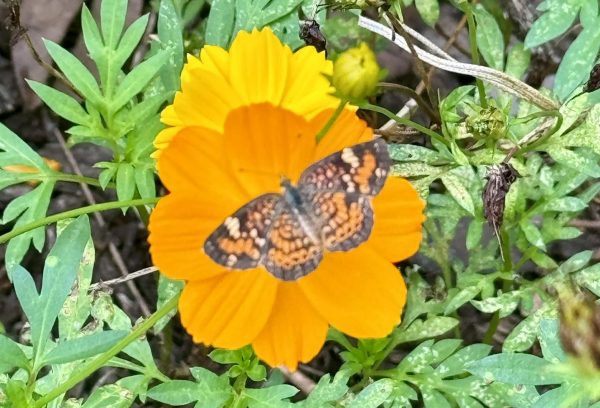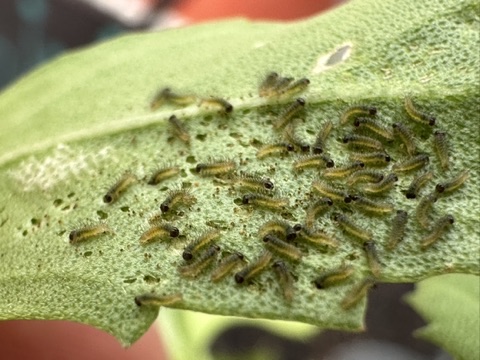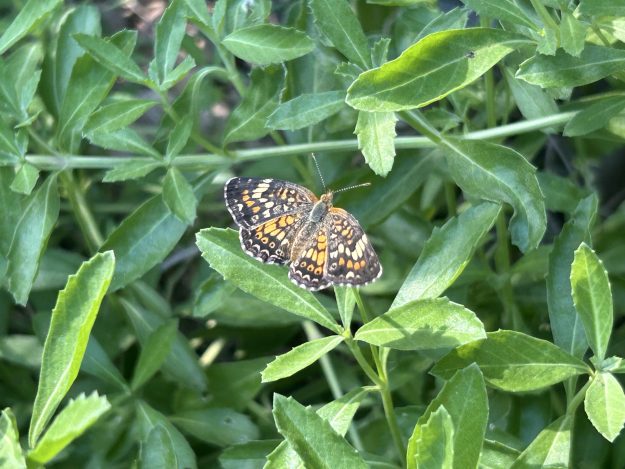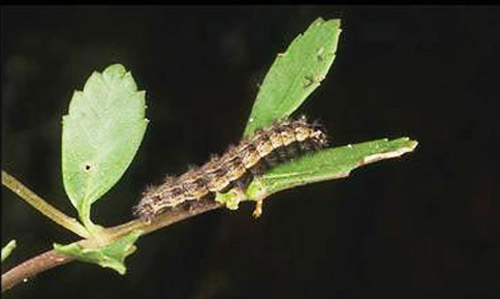A lovely but under appreciated butterfly, the Phaon crescent, is flitting around this summer, producing abundant offspring and charming those that take time to notice. Since it’s National Pollinator Week, we thought we’d introduce you to Phyciodes phaon, a Texas native and one of 6,000 members of the Nymphalidae family of butterflies.
The Phaon crescent uses one of my favorite native, drought tolerant groundcovers as its host plant–Frogfruit, taxonomically known as Phyla nodiflora. It nectars indiscriminately on various flowers, but appears to like asters.
“It’s an adorable butterfly and more people should know about it,” said Drake White, owner and operator of San Antonio’s first native plant nursery, The Nectar Bar.
According to the University of Florida Entomology department’s Featured Creatures page, Phaon crescents’ range spans from Guatemala north through Cuba and Mexico to southern California, east through South Texas and Florida to coastal South Carolina. Occasional sightings are observed in eastern Colorado, Nebraska, Kansas, and Missouri.

Phaon crescent nectaring on asters. Photo courtesy Paula Hunt-Hutsell
The wings of the tiny butterfly only span an inch to an inch and a half, so perhaps its small size explains the fact that people don’t seem to notice it or write about it. Its distinctive rust, black, cream and grey markings suggest a dandy plaid with its wings open. With its wings closed, the butterfly is less captivating, with cream and brown coloring marked with black/grey splotches.

A female Phaon crescent lays eggs on a Frogfruit leaf in San Antonio, Texas. Photo courtesy Drake White, The Nectar Bar
According to some websites, the males patrol their patch of Frogfruit, lording over its lush foliage like gatekeepers at an estate.
Michele Mire of the NOLA Butterfly Club appeared to confirm that observation. “These were all over Sankofa Wetlands Park….Flying in pairs close to the ground, on Frogfruit,” she noted on Facebook with a picture of Phaon Crescents.
The females lay dozens of eggs in clusters on the underside of Frogfruit leaves. This is a protective measure, that creates a mass of life less likely to be completely devoured by predators–literally putting all eggs in one basket, or in this case, leaf. While some eggs and tiny caterpillars will be lost to predation, some are bound to survive.

Cluster of recently laid Phaon crescent butterfly eggs. Photo courtesy Drake White, The Nectar Bar
Laying eggs in clusters is one strategy, said Craig Hensley, a Texas Nature Trackers biologist for the Texas Parks and Wildlife diversity department. “I would guess that strategy is a safety in numbers things, also dependent on the apparent food supply,” said Hensley.
“The downside to clustering is if a predator comes along, it could be a catastrophe–but, the predator could also become satiated and a couple survive.” He added that that we don’t really know why some butterflies lay single eggs and others dozens.
Once they hatch, the miniscule caterpillars start consuming the surface area of the Frogfruit foliage, apparently leaving the tougher external leaf matter alone.
See this video clip to observe them eating in action. Since we often find caterpillars by noticing the “chew holes” on a plant (and perhaps because Frogfruit grows so low to the ground), this may be another reason we don’t hear much about Phaon crescents. They are very discrete.

Phaon crescent caterpillars eating Frogfruit. Note how they only consume the fleshy part of the leaf. Photo courtesy Drake White
The Phaon crescent chrysalis is relatively nondescript, and appears similar to that of the Bordered Patch butterfly, but simply a creamy color with flecks of grey/black. Reports of chrysalises discovered underneath the Frogfruit foliage help explain why this particular pupa has been difficult to spot and pictures of it are scarce. If you have a picture of Phaon crescent chrysalis that you’re willing to share, please do so in the comments.
And why is it called the Phaon crescent?
While it’s impossible to know for sure how a name came to be, the Florida Wildflower Foundation suggests that in Greek mythology, “Phaon was an old and unattractive boatman. According to myth, he ferried Aphrodite a long distance, but would not accept payment. As a gift, Aphrodite gave him back his youth and made him beautiful — almost as beautiful as the Phaon crescent, itself!”
Keep an eye out for this lovely creature. And Happy Pollinator Week!
Related posts:
- Genista moth caterpillars return to Llano River mountain laurels
- Large, batlike Black Witch moths are on the move in South Texas
- Gangbuster agarita crop fuels birds, bees, critters and people in Texas Hill Country
- Loathed by gardeners, Tomato hornworm morphs into magnificent Sphinx moths
- Damn you, Malta star thistle! Ornery invasive takes up residence in Texas Hill Country
- Bastard Cabbage, a rambunctious and tasty invasive, is ousting our native Texas wildflowers
- Scientist and naturalist David Hillis provides holistic and enlightening tour of the Texas Hill Country
- Monarch butterflies heading our way as wildflower bounty awaits
- No monarchs yet, but Red Admirals fluttering through Texas
- Clammyweed named 2024 Pollinator Plant of the Year
- Mostly native urban pollinator garden outperforms lawn every time
- Flower “bed” works overtime as bachelor pad for solitary bees
Like what you’re reading? Don’t miss a single article from the Texas Butterfly Ranch. Sign up for email delivery at the bottom of this page, like us on Facebook, follow us on Twitter, @monikam or on Instagram. And check out my book on the monarch butterfly migration!




A wonderful uplifting post! Thank you!
Agree!
Thank you for reading and writing!
I just love these posts!
Thank you!
I’ve been seeing this adorable butterfly this summer and was delighted to learn more about them from your post.
Thanks, Mobi!
A great story. After seeing your photographs, I’m positive that I see a Phaon crecsent every morning on my walking trail. Thank so much.
Take a pic and share—and look out for chrysalises.
Thanks to this article, I saw my first Phaon this morning, feeding on a Greg’s blue mist. Would’ve never recognized it without your article.
I love these little guys! Thanks for the great article!! I transplanted some wild frog fruit from my front yard to the back yard and let it take over a large space. I’ve definitely seen a lot more of them in the yard now.